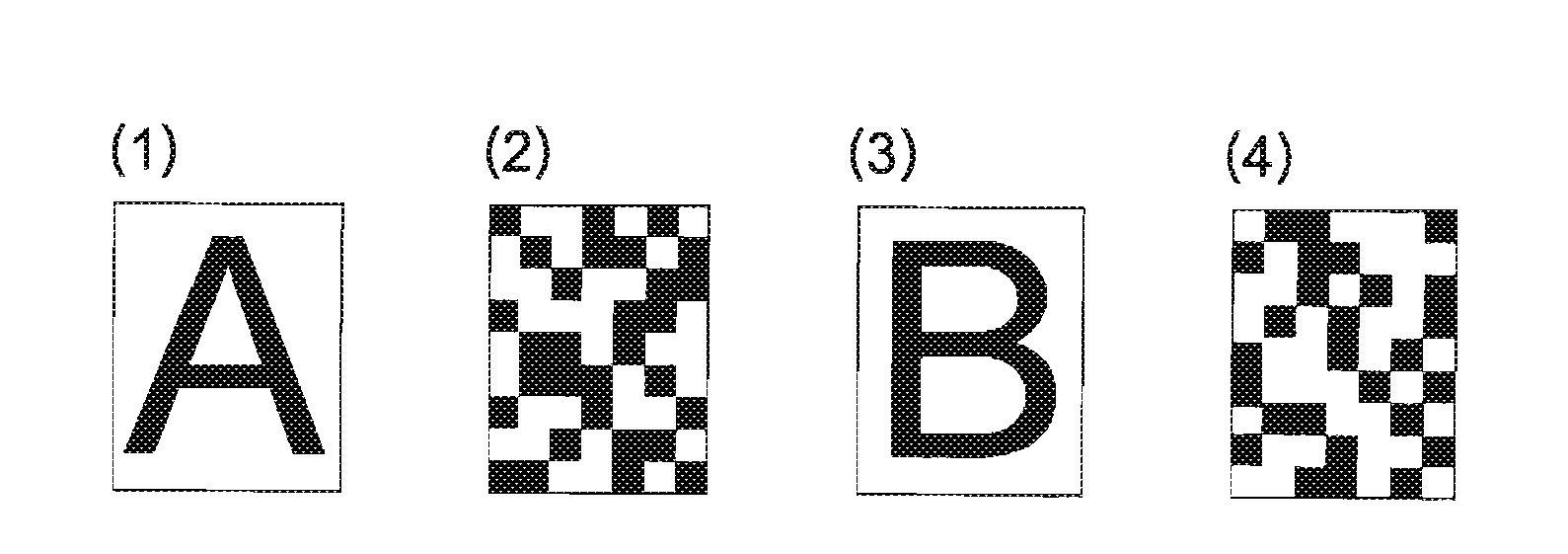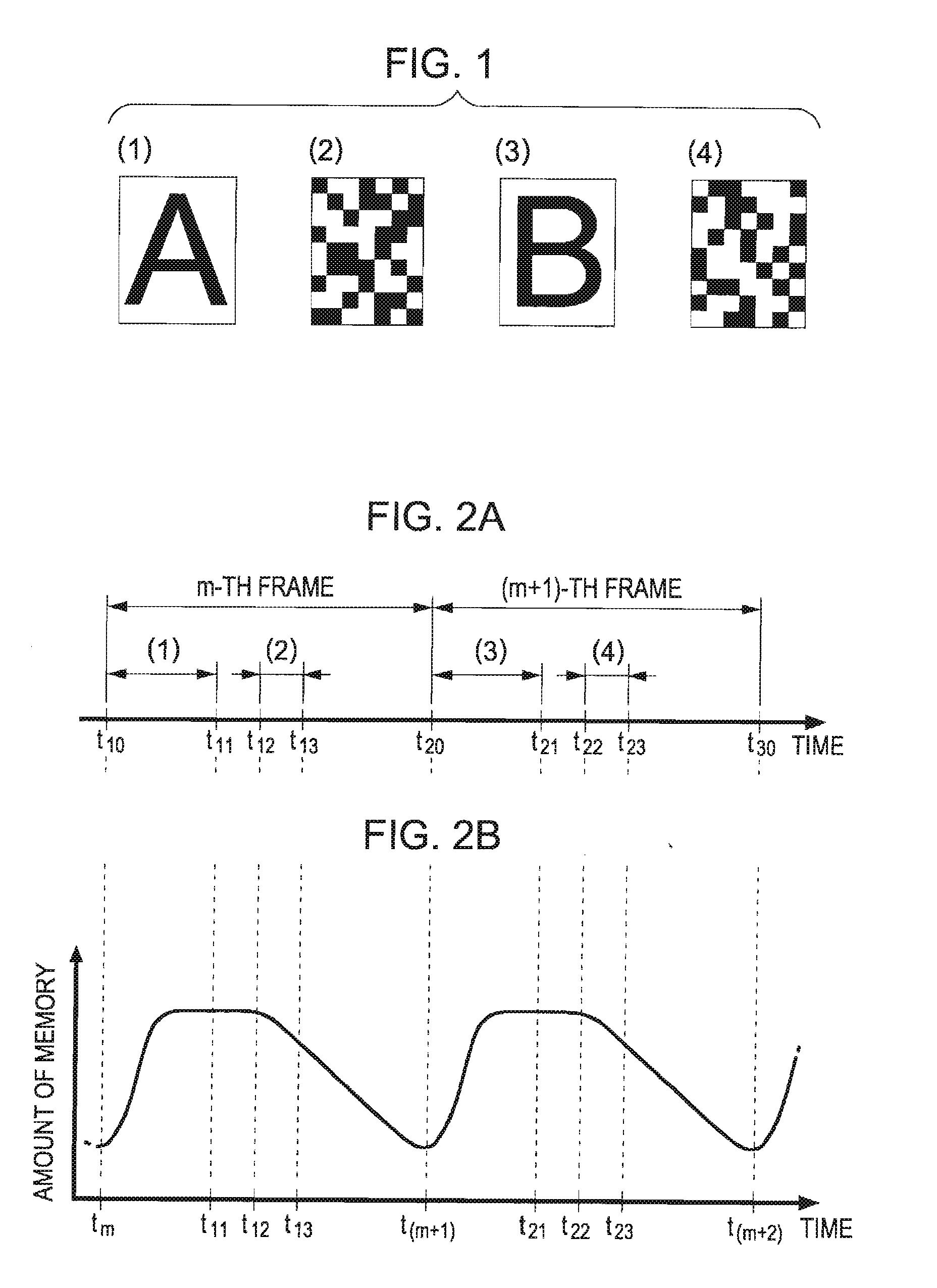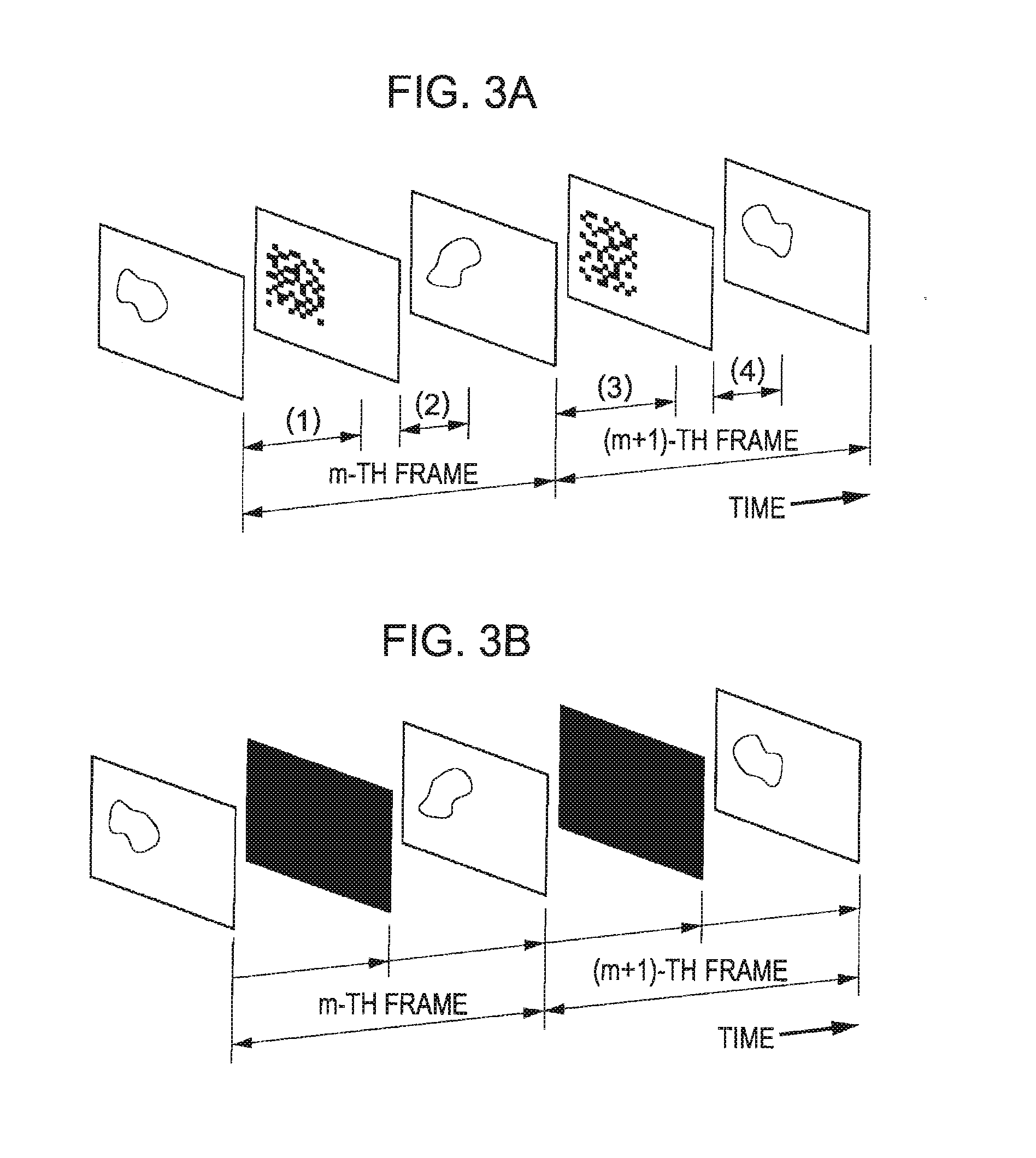Video display method, video signal processing apparatus, and video display apparatus
a video display and video signal technology, applied in the field of video display methods, video signal processing apparatus, and video display apparatus, can solve the problems of easy decrease of area perception or flicker, etc., and achieve the effect of improving the display characteristics of moving images without decreasing the luminance of display screen
- Summary
- Abstract
- Description
- Claims
- Application Information
AI Technical Summary
Benefits of technology
Problems solved by technology
Method used
Image
Examples
first embodiment
[0041]FIG. 1 is a diagram showing an image display sequence in a video display method according to a first embodiment of the present invention. FIGS. 2A and 3A are diagrams showing a display period of images as an example. FIG. 2B is a diagram showing a viewer's perception of the display.
[0042]In FIG. 1, an image denoted by “(1)” is a scan screen, which is displayed as a frame (referred to as “m-th frame” for the convenience of description), among scan screens on the basis of video signals supplied in a non-interlaced format (sequential scanning). An image denoted by “(3)” is a scan screen displayed in accordance with the next frame (referred to as “(m+1)-th frame”).
[0043]Here, a case where a non-interlaced format is used is described. The number of frames per second is, for example, 60, and a period of one frame is 16.7 milliseconds (a reciprocal number of 60 Hz).
[0044]In this embodiment, as shown in FIGS. 2A and 3A, a screen (1) defined by a video signal is displayed from the star...
second embodiment
[0094]A second embodiment of the invention will now be described. Hereinafter, descriptions for embodiments of the second embodiment common to those of the first embodiment will be omitted as needed.
[0095]FIG. 12 is a diagram of a video signal processing apparatus for implementing a video display method according to the second embodiment.
[0096]As shown in the figure, the video signal processing apparatus 10b processes a video signal Vid supplied from an external higher-level device (not shown) and supplies the processed video signal to a display unit 20. For example, the video signal processing apparatus 10b that is connected to an input terminal of the display unit 20 as an adaptor includes a multiple-speed frame generating unit 12, a mask pattern generating unit 16, and a selector 18.
[0097]The reasons that the video signal Vid transmitted from the higher-level device is input to the mask pattern generating unit 16 are as follows. First, timing for generation of mask patterns is de...
PUM
 Login to View More
Login to View More Abstract
Description
Claims
Application Information
 Login to View More
Login to View More - R&D
- Intellectual Property
- Life Sciences
- Materials
- Tech Scout
- Unparalleled Data Quality
- Higher Quality Content
- 60% Fewer Hallucinations
Browse by: Latest US Patents, China's latest patents, Technical Efficacy Thesaurus, Application Domain, Technology Topic, Popular Technical Reports.
© 2025 PatSnap. All rights reserved.Legal|Privacy policy|Modern Slavery Act Transparency Statement|Sitemap|About US| Contact US: help@patsnap.com



